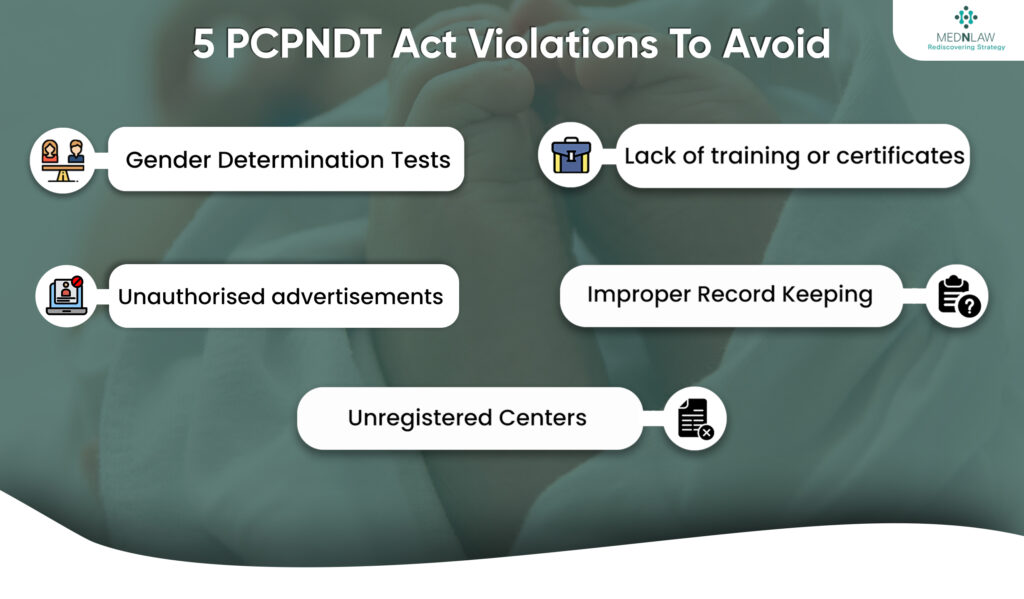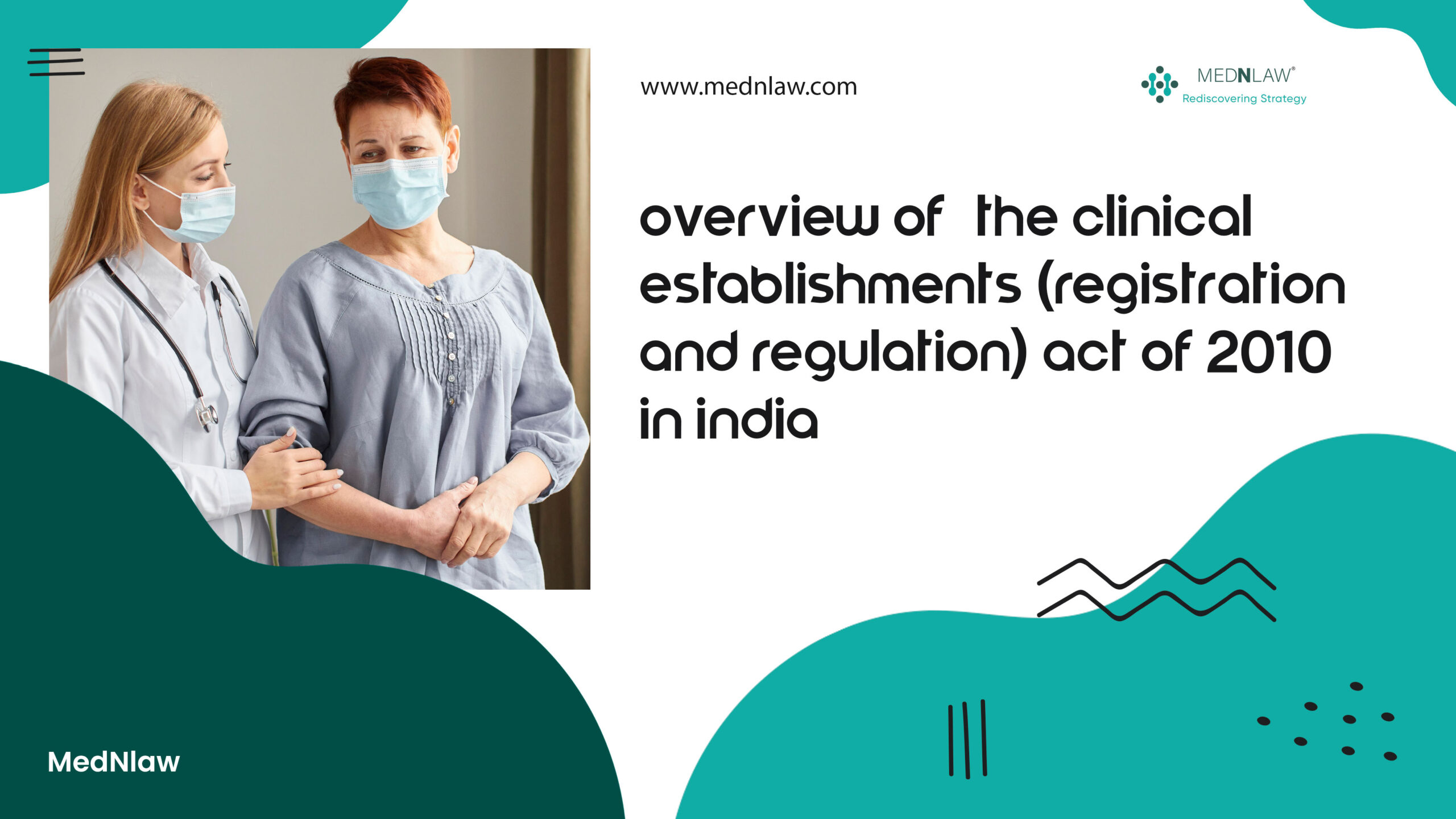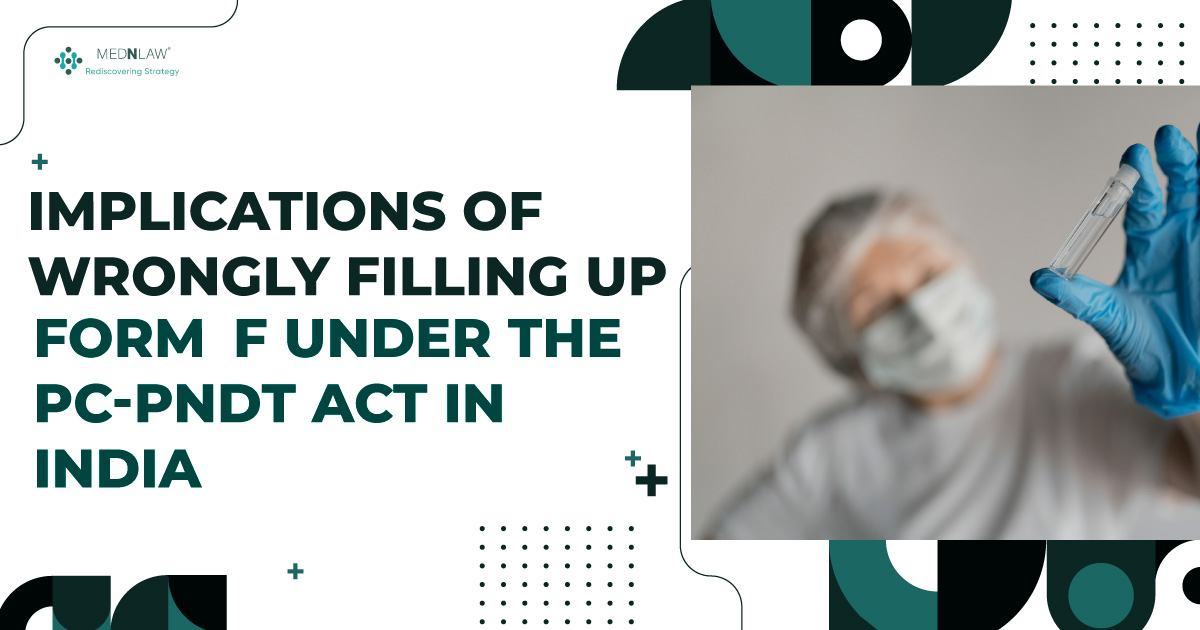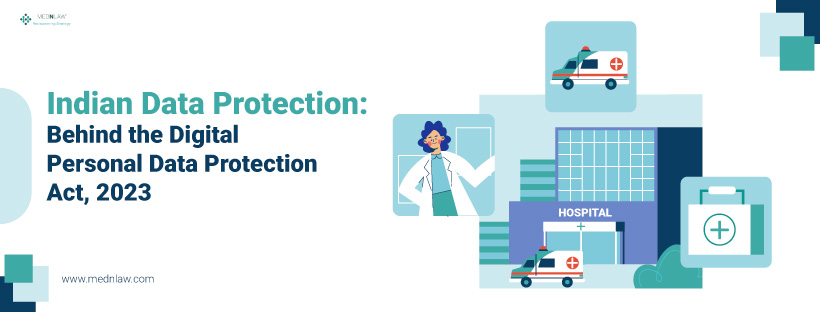
India is one of the few countries where males exceed the number of females. The sex ratio at birth (SRB), which portrays the number of boys born to every 100 girls, is generally consistent in human populations, where about 105 males are born to every 100 females.
The male/female population in India has excellent imbalances; there are also substantial local differences from Northern/Western regions such as Punjab or Delhi, where the sex ratio is as high as 125, to Southern/Eastern India, e.g. Kerala and Andhra Pradesh, where sex ratios are around 105.2.
The Pre-Conception and Prenatal Diagnostic Techniques (Prohibition of Sex Selection) Act, 1994, is also referred to as the PCPNDT Act. This Act is a historic legislation in India which seeks to prevent gender discrimination.
The Act was enacted as a response to the declining sex ratio due to the unrestrained use of diagnostic technologies for sex selection. The Act comes up as a crucial step towards deep-rooted societal discrimination. This is a detailed guide to understanding the key aspects of the PCPNDT Act.

Historical Context for the PCPNDT Act
The PCPNDT Act was legislated in 1994 and further amended in 2003 to take action against the practice of sex-selective abortions or female foeticide. The preference for male children, which was driven by the socio-cultural norms, did lead to female feticides, particularly in the states of Haryana, Punjab and Rajasthan. This led to a disparity in the sex ratio of the following states.
The matter was discussed in Parliament, and the Prenatal Diagnostic
Techniques ( Regulation and Prevention of Misuse ) Bill, 1991, was introduced in Lok Sabha. After the discussion, the Lok Sabha adopted a motion to refer the Bill to a Joint Committee of both the Houses of Parliament in September 1991.
Furthermore, the Joint Committee presented its report in December 1992, and on the basis of the recommendations of the Committee, the Bill was reintroduced in the Parliament. The Preconception and Prenatal Diagnostic Techniques (PCPNDT) Act, 1994, is an Act of the Parliament of India that was enacted to stop female foeticides and arrest the declining sex ratio in India. This Act banned prenatal sex determination. The main objective behind the Act is to ban the use of sex selection techniques before or after conception and prevent the misuse of prenatal diagnostic techniques for sex-selective abortions.
The Act emerged as a torch of enlightenment and a measure to end this social evil. It provides a legal framework to restrain the use of ultrasound and other diagnostic tools for sex-selective abortions.
The PCPNDT Act – Objectives and Key Provisions
An Act to provide for the prohibition of sex selection, before or after conception, and for regulation of prenatal diagnostic techniques for the purposes of detecting genetic abnormalities or metabolic disorders or chromosomal abnormalities or certain congenital malformations or sex-linked disorders and for the prevention of their misuse for sex determination leading to female foeticide; and, for matters connected therewith or incidental thereto
Objectives Explained
- Prohibition of Sex Selection – The Act aims to eliminate gender bias by prohibiting sex-selection abortion after conception.With the growing number of female foeticide it is necessary that act addresses all such issues.
- Regulation of Diagnostic Techniques – It restricts the use of diagnostic tools like ultrasound and amniocentesis to make sure they are not being used for determining the sex of the fetus.
- Prevention of Female Feticide – The main goal of the PCPNDT Act is to ensure they anticipate female feticide and promote gender equality, in return balancing the sex ratio of the affected states.
- Promotion of Awareness – The PCPNDT Act tends to increase the public awareness about the adverse effects of gender disparity and importance of both the genders in the society.
Key Provisions of the PCPNDT Act
Prohibition of Sex Selection
The PCPNDT Act clearly forbids sex selection, which makes it illegal to advertise or promote the facilities for sex determination. It further makes the conducting of prenatal diagnostics for determining the sex of the fetus except for specific medical conditions.
Regulation of Diagnostic Techniques
The PCPNDT Act mandates that all the ultrasound clinics, genetic counselling centers and diagnostic laboratories be registered to their appropriate authorities. Also, only qualified health professionals will perform the diagnostic procedures and a detailed record of each record shall be maintained.
Penalties and Punishments
The violation of the PCPNDT Act can have severe consequences in the form of penalties or punishments. The healthcare professional can get imprisonment ranging from three to five years, depending on the severity of the violation of the PCPNDT Act. Not only this, a fine of INR 50 000 is charged for the first offence, and there are increased penalties for other subsequent offences. There could be a suspension or cancellation of licenses for medical practitioners if they are found guilty of infringement of the Act.
Role of Authorities
The PCPNDT Act seeks to establish a multi-tiered system for monitoring and enforcement.
Central Supervisory Board (CSB) – This board was responsible for suggesting the government and reviewing the implementation of the Act.
State and District Advisory Committees – These committees assist in monitoring, and spreading the awareness. Further, the committee will also recommend actions against violators.
Appropriate Authorities – These authorities are empowered to look into the complaints and investigate further. Also these authorities can take legal actions against the violators.
Implementation Mechanisms
Registration of Facilities
The facilities offering diagnostics services must be registered with appropriate authorities. Further, the registration process ensures that these healthcare and diagnostics facilities will comply with the prescribed standards and regulations.
Maintenance of Records
The medical facilities are required to maintain detailed records of diagnostics procedures, which include; the patient’s details and consent forms, the reason for conducting the procedure, and the final results and reports. It is important to note that the records must be preserved for at least two years and Act as vital evidence during any related legal proceedings.
Inspection and Audits
The authorities conduct the inspections and audits of registered hospitals and diagnostics centers to ensure compliance. Further, the unregistered facilities are subjected to legal action if they violate the PCPNDT Act. This inspection reinforces the power of the government authorities to monitor, evaluate and assess the functioning of these facilities.
Challenges in Implementation
Socio-Cultural Barriers
The deep-rooted cultural preference for male children continues to drive the demand for sex-selective practices; thus, despite the legal framework, the sex ratio has not significantly improved. Also, directing these societal norms requires continuous efforts for education and awareness.
Lack of Awareness
People in rural areas are still unaware of the PCPNDT Act’s legislation and the consequences of violating it. This lack of awareness further hinders the effective implementation of the Act. The act has not been able to reach the commons of the country , therefore it hasn’t reached where it ought to have been reached.
Limited Enforcement Capacity
The resources are limited, thus the insufficient manpower and training among enforcement authorities hampers the effective implementation. Additionally, the legal proceedings against the offenders are usually lengthy and complicated.
Technological Advancements
The advancements in diagnostics and genetic technologies brings new challenges. It is very important and essential for the authorities to monitor and regulate the emerging technologies.
Success Stories and Impact
Improved Sex Ratios
The strict implementation of the PCPNDT Act has actually contributed to improvements of sex ratios in various states. For example, Haryana was once infamous for the sex ratio. With the enforcement of PCPNDT, there has been a huge change. The initiatives like Beti Bachao Beti Padhao have revolutionised the thought process of the commons and have brought in some changes.
Increased Awareness
The success of the PCPNDT Act has been significantly influenced by its widespread awareness campaigns, which have reached various parts of India, especially in rural and underserved regions.
With these campaigns, the poor commons of India are taught of the possible outcome of law and made aware of the same. The unnoticed areas of rural India are targeted and they are educated on the prohibition of the femal foeticide and sex selection
Legal Precedents
The successful convictions under the PCPNDT Act have not only demonstrated the government’s commitment to tackling gender discrimination but have also sent a clear and powerful message across the country: gender bias and female foeticide will not be tolerated.
Conclusion
The PCPNDT Act is a vital provision in India’s fight against gender discrimination and female foeticide. As we know with time significant progress has been made. But there is so much that still has to be done to achieve its objectives fully.This act serves as an embodiment in building an equal society. By the effective implementation and raising awareness about gender equal society. The continuous commitment of the authorities and the society is essential for the proper implementation of the act.
-
 Overview of the Clinical Establishments Act of 2010 in India6:08 am GMT+00:00•April 28, 2025Read more
Overview of the Clinical Establishments Act of 2010 in India6:08 am GMT+00:00•April 28, 2025Read more -

-

Here are some related articles you may find interesting
Copyright Mednlaw






